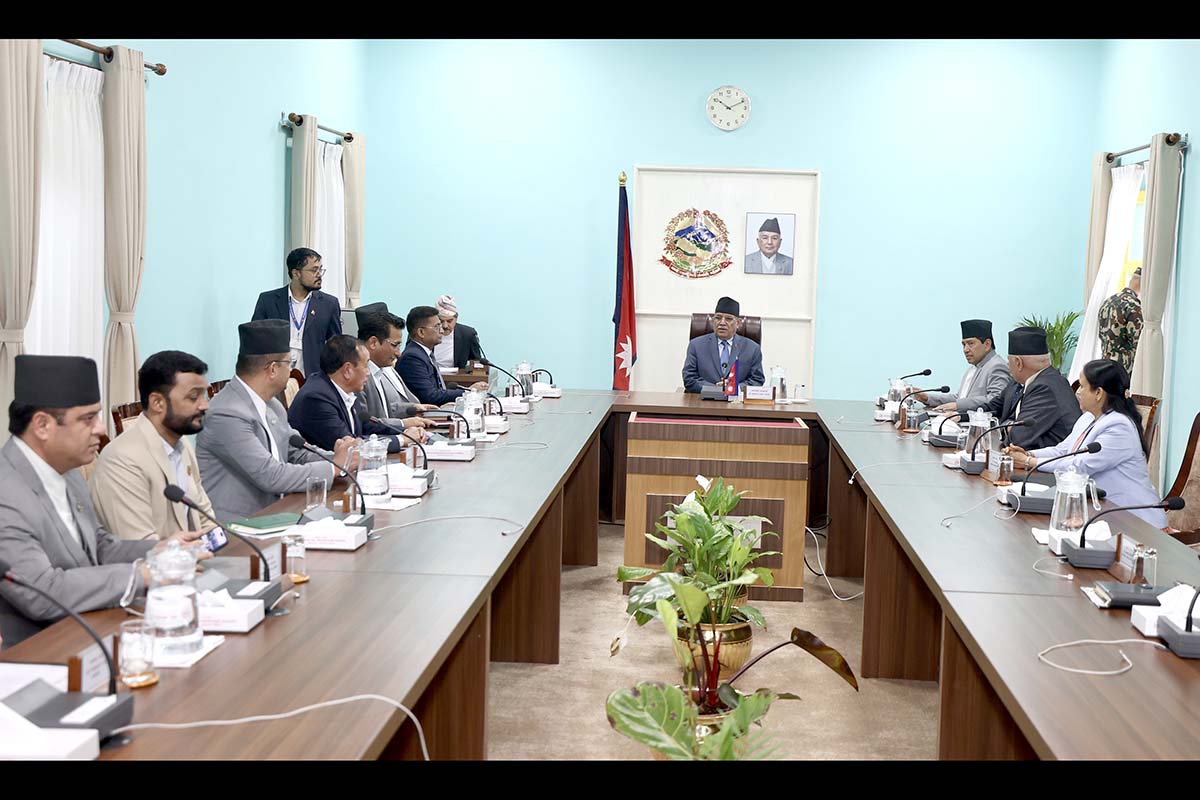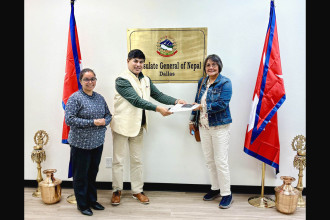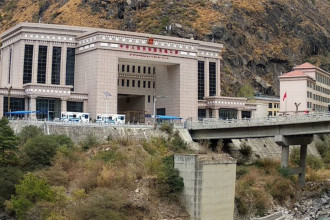
KATHMANDU: National Planning Commission (NPC) submitted the draft of the 16th periodic plan to the Office of the Prime Minister and the Council of Ministers for final approval on Sunday.
The five-year periodic plan (2024/25-2029/30) has set major goals of 'Good Governance, Social Justice and Prosperity'.
The periodic plan, to be implemented from the next fiscal year 2024/25, carries ambitious targets including achieving an economic growth rate of 7.3% and a per capita income of $2,413. In the current fiscal year, the projected economic growth rate of Nepal is 3.9% and the per capita income is $1,456.
Furthermore, the periodic plan aims to reduce absolute poverty to 20.3%, consumer inflation to 5% by the fiscal year 2029/30, and increase Nepal's human development index to 0.650 from the current 0.601. It also aims to raise the human wealth index from 76.3 to 78 and to reduce the economic and environmental risk index from 29.7 to 24.
The plan sets out to increase the average life expectancy of Nepalis to 73 years from the current 71.3 years within five years. The number of families with access to a health facility within half an hour's distance is currently 77%, and the target is to increase it to 90%. The plan also aims to raise the literacy rate to 85% and reduce the unemployment rate from 11.4% to 5%.
The periodic plan aims to increase the hydropower production, which is currently around 3,100MW, to 11,769MW within five years. Similarly, it aims to ensure that 90% of the population has access to the Internet and 85% of families have access to banks and financial institutions.
A goal has been set to increase the rule of law index from 0.52 to 0.80, the global competitiveness index from 52 to 65, and the corruption reduction awareness index from 35 to 43. The periodic plan includes sectoral indicators, a transformational strategy, and major interventions to achieve the set goals and targets.
In the draft of the periodic plan, the target is to achieve an economic growth rate of 7% to 8.5%, up from 1.86% last year.
According to the NPC, the draft has been prepared with transformational programmes along with sectoral strategies. The updated planning includes transformational strategies, major interventions, and quantitative targets.
The sectoral headings include Strengthening Macroeconomic Fundamentals and Rapid Economic Growth; Enhancing Production, Productivity and Competitiveness; Decent Job and Productive Employment; Educated, Skilled and Healthy Human Capital Formation; Quality Infrastructure and Integrated Transport Management System; Modern, Sustainable and Systematic Urbanisation and Settlements; Social Empowerment, Inclusion and Mobilisation and Development and Reinforcement of Provincial and Local Economy and Expansion of Formal Sector.
Likewise, Balanced Development for Reducing Poverty and Inequality and Creating an Equitable Society; Efficient Fiscal Management and Capital Expenditure Capacity Enhancement; Governance Reform and Promoting Good Governance; LDC Graduation and Beyond, and Sustainable Development Goals and Green Economy are the other sectoral themes for the 16th Periodic Plan.
As targeted, the revenue-GDP ratio will be increased to 24% from the current ratio of 17.8% and the federal expenditure will be increased to 32% in ratio to GDP from 26.5% of the present.
Similarly, the 16th periodic plan has targeted not to exceed the sovereign loan from 45% of the GDP while the trade deficit would be reduced to 24% in ratio to GDP from 27% of the present time. Likewise, the inflow of remittance would be maintained between 22% to 24% of the GDP.
The 16th periodic plan has set some ambitious targets for increasing domestic production and productivity including establishing 140 industrial zones, establishing one more special economic zone and increasing the power production and consumption as well.
As planned, electricity worth Rs 41 billion is projected to be exported annually by the end of the 16th periodic plan, with the energy sector being enhanced to reduce the overall trade deficit. The periodic plan aims to create 1.2 million jobs each year and increase the minimum wage of workers to Rs 25,000 per month, while also increasing the number of social security beneficiaries to 2 million.
A plenary meeting of the NPC, which took place in early May 2023, approved the 16th plan.
The draft of the 16th plan aims to uphold good governance in political, administrative, and judicial sectors, maintain social justice in health, education, and employment sectors, and achieve prosperity in social life, economic development, and the national economy. The new periodic plan has outlined a strategy to achieve good governance, social justice, and prosperity through structural transformation by identifying, addressing, and resolving structural obstacles observed in development activities.
The strategy for structural transformation includes adopting the latest technology and management methods based on research and development, and producing decent, productive, and inclusive employment.
It is proposed that a policy will be adopted to run a national skill development and employment programme in collaboration with private, government, and non-government sectors. Priority will be given to empowering marginalised communities and promoting inclusive employment through affirmative action.
"Employment will be created within the country by producing skilled and capable human resources through the utilisation of demographic dividends at all three levels of government," reads the concept paper of the periodic plan. A strategy has been adopted to identify new destination countries with high returns, along with safe and secure work for foreign employment, and the signing of bilateral labour agreements.
(With inputs from RSS)






-1767162699.jpeg)